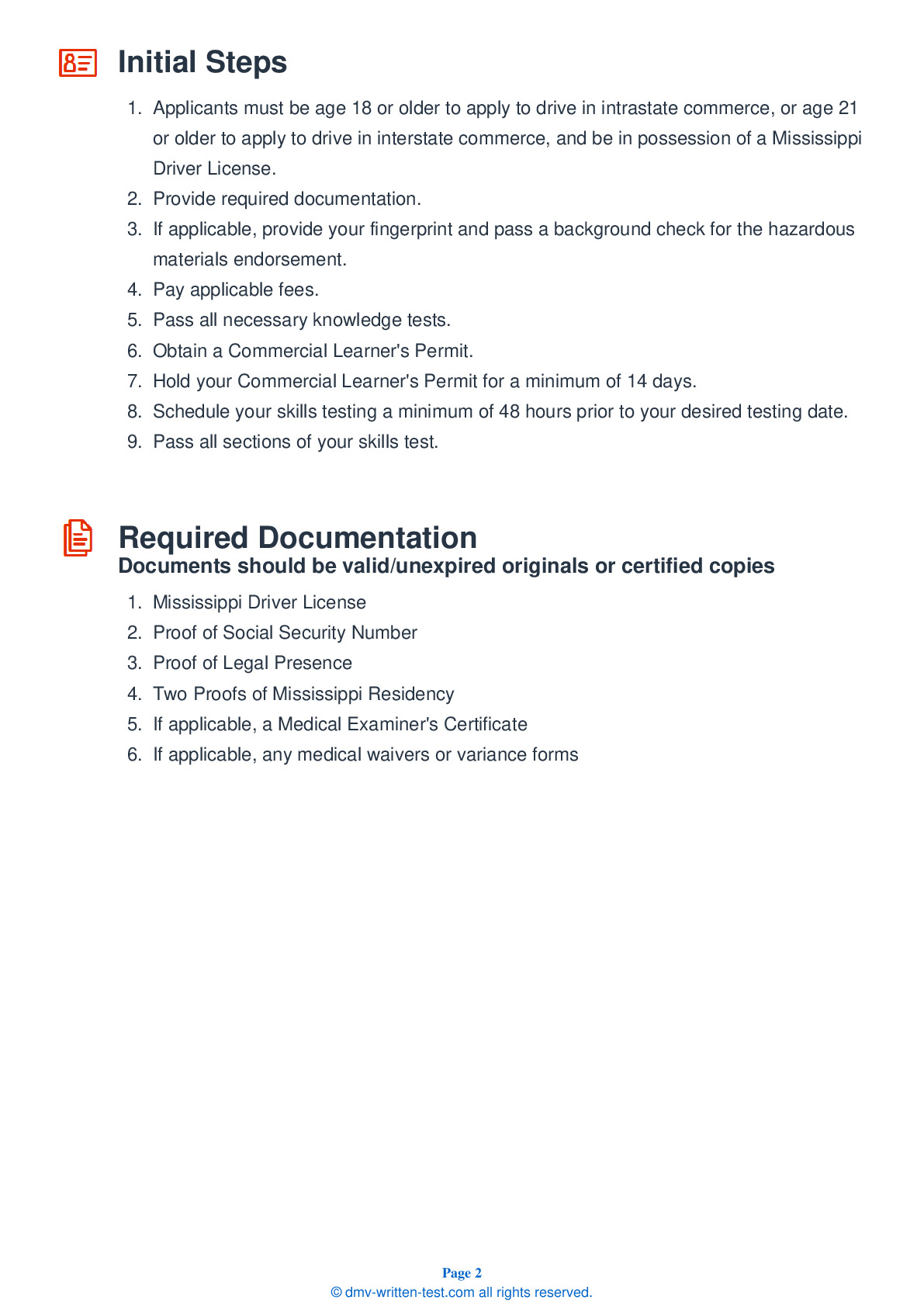Combination
All applicants who are applying for a Class A CDL should be prepared to take the Combination test. This test covers information found in Section 6 of the Commercial Driver License Manual. Section 6 provides the information needed to safely operate tractor-trailers, doubles, triples, and straight trucks with trailers. The test is made up of 20 multiple-choice questions, and applicants will need to correctly answer a minimum of 16 questions to pass. The Combination test is not a replacement for the Double/Triple endorsement test.
Number of Question
Passing Score
1. When traveling more slowly than 40 mph, maintain at least ____ of following distance per every 10 feet of your vehicle.
Explanation
At speeds below 40 mph, you should allow at least one second of following distance for every 10 feet of your vehicle. Follow the same formula when traveling at faster speeds, then add one additional second to your following distance. Remember that larger vehicles require more space to stop than smaller vehicles.
2. If you use the trailer hand brake while your trailer is skidding, it will:
Explanation
If you are experiencing a trailer jackknife, you can help your tires regain traction by releasing the brakes. Using a trailer hand brake while experiencing a skid will only cause the skid to continue.
3. The trailer hand valve should be used:
Explanation
The trailer hand valve should be used only to test the trailer brakes. It should not be used while driving because it may cause the trailer to skid.
4. To prevent a trailer from rolling over, you should:
Explanation
To reduce the risk of a rollover when driving a combination vehicle, you should keep the weight of the cargo as low to the ground as possible and drive slowly around turns.
5. Operating combination vehicles usually requires ____ operating single vehicles.
Explanation
Combination vehicles are usually heavier and longer than single combination vehicles. Operating a combination vehicle requires a higher level of driving skill than operating a single commercial vehicle.
6. Combination vehicles:
Explanation
Combination vehicles are usually heavier and longer than single commercial vehicles. For these reasons, they usually require more driving skill than single commercial vehicles.
7. To help prevent rollovers, you should:
Explanation




